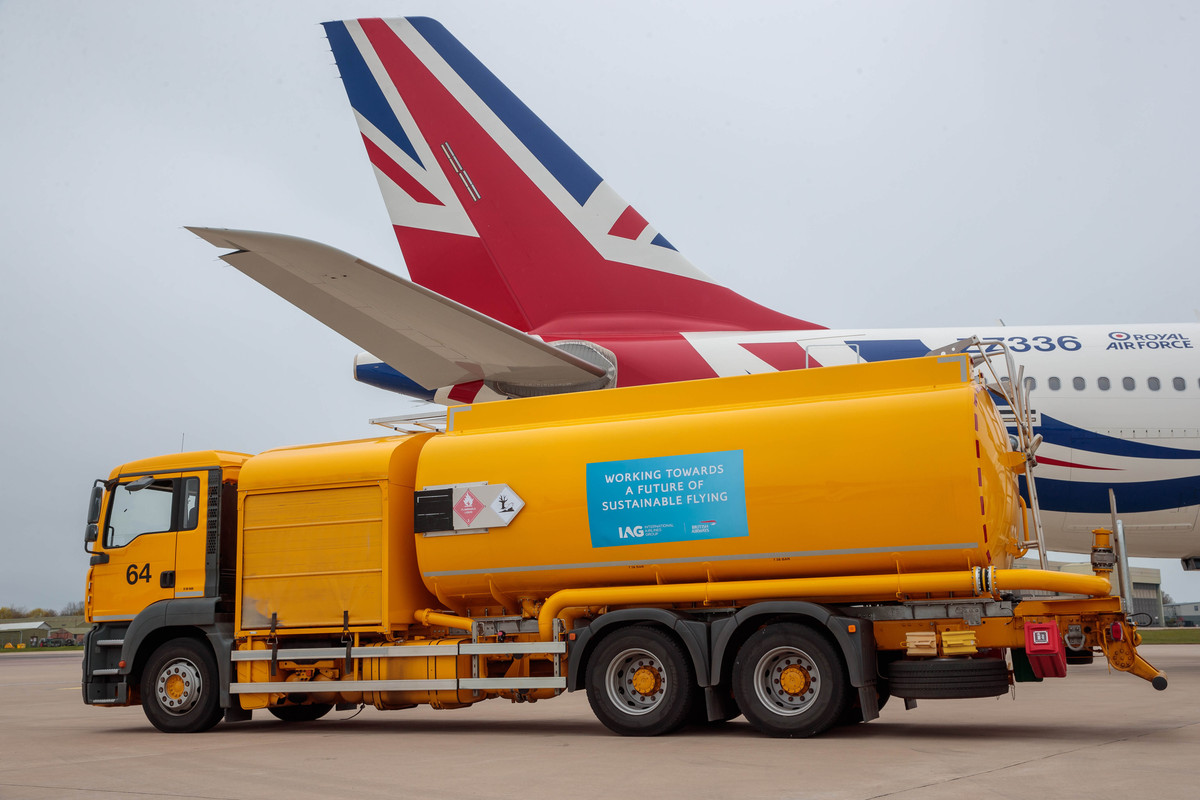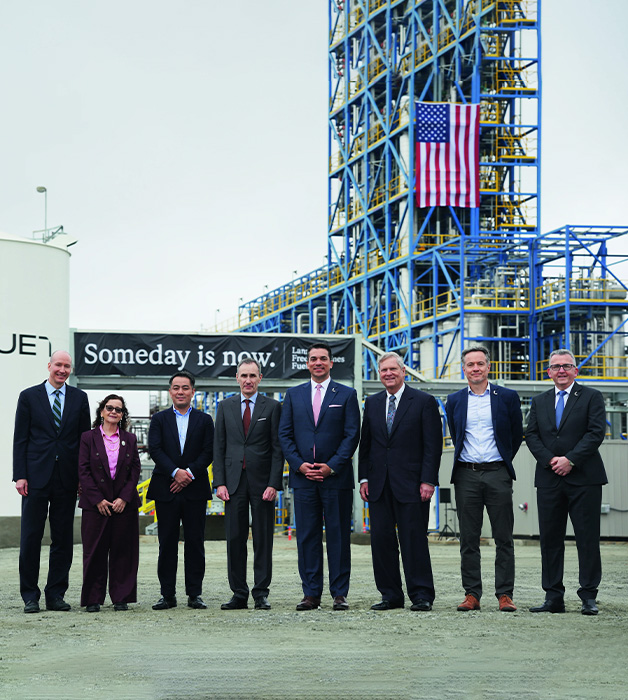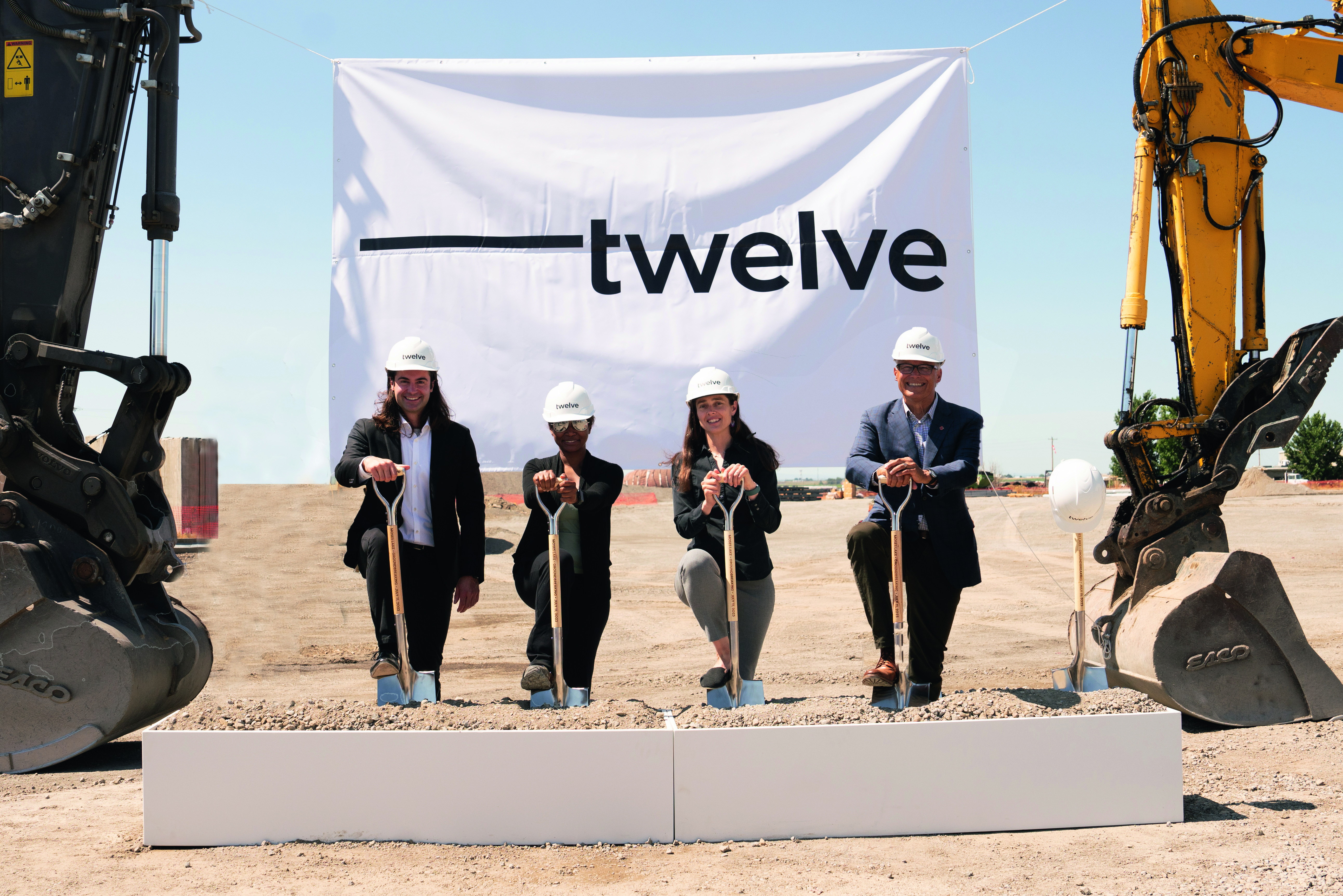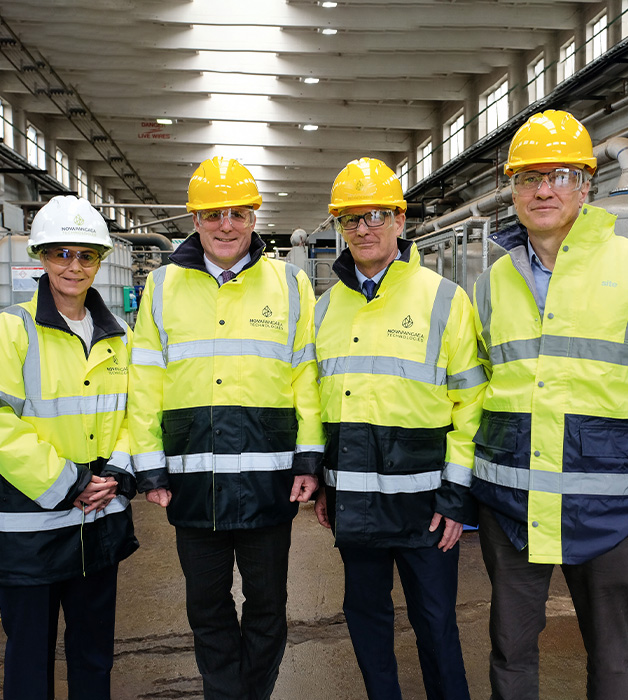50
ktonnes of SAF used by Group airlines in 2023 an increase of more than 400% from 2022
one of the highest volumes globally
80
%Typical reduction of carbon emissions
compared to fossil jet fuel
1
stairline group to commit to SAF uptake target by 2030
1
bninvestment in SAF usage agreements
our total investment in SAF as of 31 December 2023
of which 86% is future commitments, based on an assumed jet fuel price of $800 per metric tonne and contracted margins for SAF production
What is sustainable aviation fuel?
Sustainable Aviation Fuels (SAF) are chemically almost identical to kerosene. The feedstocks for these fuels – currently waste materials such as used cooking oil, municipal waste or waste wood – absorb CO2 in their growth cycle before this carbon is recycled into fuel and then consumed in the flight. The processes used to produce SAF are certified to international standards to ensure the fuels are safe to use. SAF can be used in existing aircraft and airport fuelling infrastructure.
IAG ensures its SAF complies with strict sustainability certification schemes to ensure the feedstocks come from sustainable sources, and that the production processes conserve water and energy and have minimal wider impacts.
What role will SAF play in our transition plan?
SAF reduces carbon emissions on a greenhouse gas lifecycle basis, typically by 80% or more compared with fossil jet fuels. IAG is on track to deliver a 100-fold increase in its SAF volumes between 2022 and 2030 and expects to use SAF for 70% of total fuel in 2050.
In 2021, the Group set a target of using one million tonnes of SAF a year by 2030, dependent on appropriate government policy support, and this volume will save as much carbon as taking one million cars off the road a year.
Our targets
Key SAF partnerships
| Producer | Production location | Anticipated supply start | Technology |
|---|---|---|---|
| BP | Europe; China | Supplying since 2021 | HEFA |
| Neste | Finland; Singapore | Supplying since 2021 | HEFA |
| Phillips 66 | Humber, UK | Supplying since 2021 | HEFA |
| Repsol | Cartagena, Spain | Supplying since 2022 | HEFA |
| Cepsa | Huelva, Spain | Supplying since 2023 | HEFA |
| LanzaJet | Georgia, USA | 2024 | Alcohol-to-jet |
| Twelve | Washington, USA | 2025 | Power-to-Liquid |
| LanzaJet/ Nova Pangaea1 | North East, UK | 2027 | Alcohol-to-jet |
| Aemetis | California, USA | 2027 | HEFA |
| Gevo | Minnesota, USA | 2028 | Alcohol-to-jet |
| LanzaTech | South Wales, UK | 2028 | Alcohol-to-jet |
| Velocys1 | Immingham, UK Mississippi, USA |
2029 | Fischer-Tropsch |
1. Includes carbon capture and storage.
SAF partnerships in action
LanzaJet: Freedom Pines
Supported by investment by British Airways in 2021, on 24 January 2024, LanzaJet opened the first production plant dedicated to low-carbon ethanol SAF in Georgia, USA.
Twelve
In February 2024, IAG signed its largest-ever SAF purchase agreement with Twelve, a SAF project based in Washington which produces advanced Power-to-Liquid SAF made from CO2, water and renewable energy. This means we have secured one third of the SAF required to meet IAG’s 10% SAF by 2030 target.
Project Speedbird
In June 2023, British Airways, LanzaJet and Nova Pangaea Technologies signed an agreement that will accelerate Project Speedbird, an initiative created by the companies in 2021 to develop cost-effective SAF for commercial use in the UK. Jonathon Counsell, IAG Group Head of Sustainability and Jim Davies, IAG Programme Director – Sustainable Flight are pictured here with Anthony Brown MP, Aviation Minister and Sarah Ellerby, CEO Nova Pangea.




